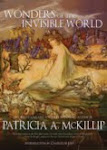Browns’ Limited Catalogue of 1906 covered all the usual items any settler or towns person wished to purchase:ladies’ and mens’ clothing, furniture, wall paper, floor oilcloth and linoleum, carpets and various sundry goods.

I particularly liked the different styles of rugs which are quite similar to those today. There were different types: runners of 27” and 36” wide included Axminister, Wilton and velvet, Brussels and English Tapestry, Wool and Union, Japanese Straw Matting, Cocoa Matting; parlor rugs with or without fringes, lining, reversible wool Smyrna rugs (with attestation of the wearing quality of two rungs, never curl an dlie perfectly flat on the floor), hearth rugs.

Other floor coverings popular at the time were oilcloth and linoleum used in kitchens.

Wallpaper all had upper borders illustrating a different design or pastoral scene. One particular listing states: “High class, gold tinted wall paper, the colorings are not loud but have a character that cannot but be appreciated,” and “Baronial wall paper is a high grade paper in a rich ground color of red, cannot fail to embellish libraries, dining rooms and halls.”
Window shades came in coloured cloth often with lace trim or fringe.

Many accoutrements necessary for running the household included: piano drapes, pillow cords, cushion girdles, linen collars, foundation collars, dress shields, black valenciennes and net lace, torchon laces and insertions, elastic, hari brushes, dressing combs, hose supporters, notions, shirt waist sets, ruchings and frillings, various styles of gloves, steels, spools and feather bone,corset clasps, table oilcloths and American leathers, flannelettes.
These particular furnishings and those in the earlier sections were the main stay of households throughout Canada.
Other participants to My Town Monday can be found
here.
Click to enlarge any of the photos.


























